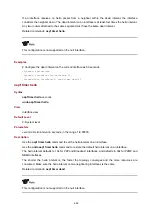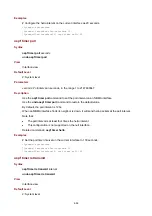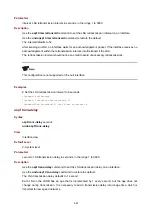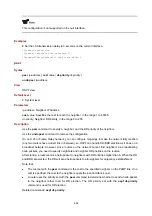
5-2
Use the
undo area-authentication-mode
command to restore the default.
No area authentication is configured by default.
The password in the specified mode is inserted into all outgoing Level-1 packets (LSP, CSNP and
PSNP) and is used for authenticating the incoming Level-1 packets.
With area authentication configured, IS-IS discards incoming routes from untrusted routers.
Note that:
z
Routers in a common area must have the same authentication mode and password.
z
If neither
ip
nor
osi
is specified, OSI related fields are checked.
Related commands:
reset isis all
,
domain-authentication-mode
,
isis authentication-mode
Examples
# Configure the area authentication password as
ivg
, and the authentication mode as
simple
.
<Sysname> system-view
[Sysname] isis 1
[Sysname-isis-1] area-authentication-mode simple ivg
auto-cost enable
Syntax
auto-cost enable
undo auto-cost enable
View
IS-IS view
Default Level
2: System level
Parameters
None
Description
Use the
auto-cost enable
command to enable automatic link cost calculation.
Use the
undo auto-cost enable
command to disable the function.
This function is disabled by default.
After automatic link cost calculation is enabled, the link cost is automatically calculated based on the
bandwidth reference value of an interface. When the
cost-style
is
wide
or
wide-compatible
, the cost
value of an interface is calculated by using the formula: Cost = (reference bandwidth value/link
bandwidth) × 10. When the cost style is of other types: if the interface bandwidth does not exceed 10
Mbps, the interface cost equals 60; if the interface bandwidth does not exceed 100 Mbps, the interface
cost equals 50; if the interface bandwidth does not exceed 155 Mbps, the interface cost equals 40; if
the interface bandwidth does not exceed 622 Mbps, the interface cost equals 30; if the interface
bandwidth does not exceed 2500 Mbps, the interface cost equals 20; if the interface bandwidth
exceeds 2500 Mbps, the interface cost equals 10.
Related commands:
bandwidth-reference
,
cost-style
.
















































